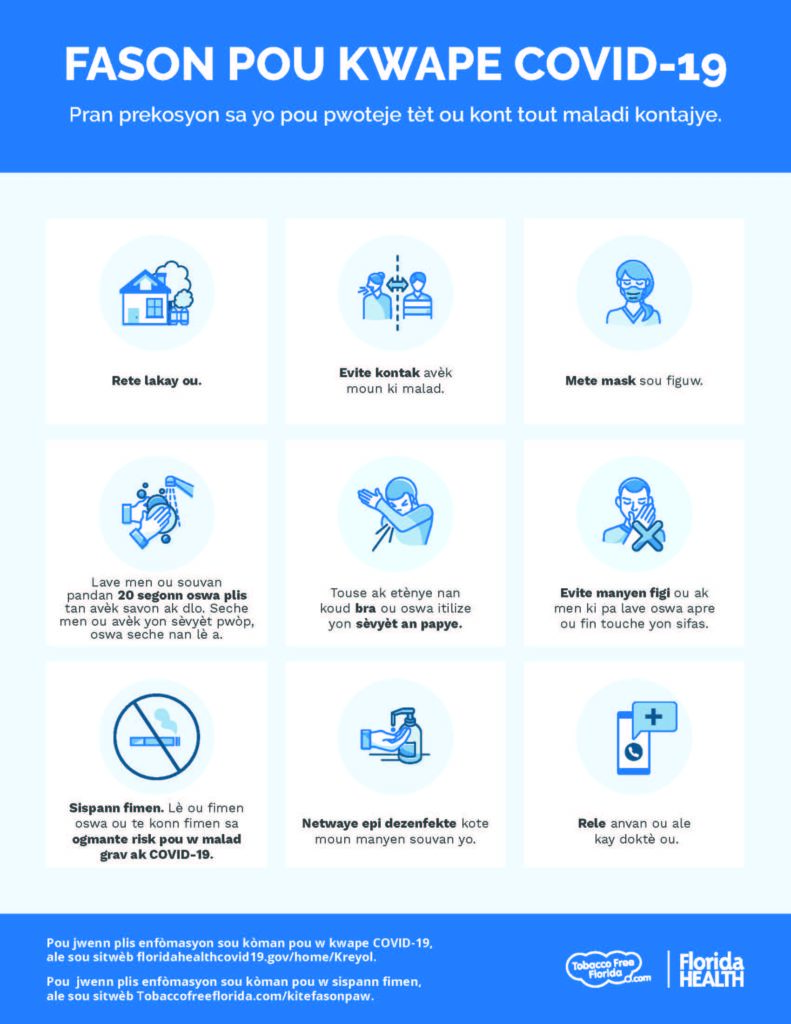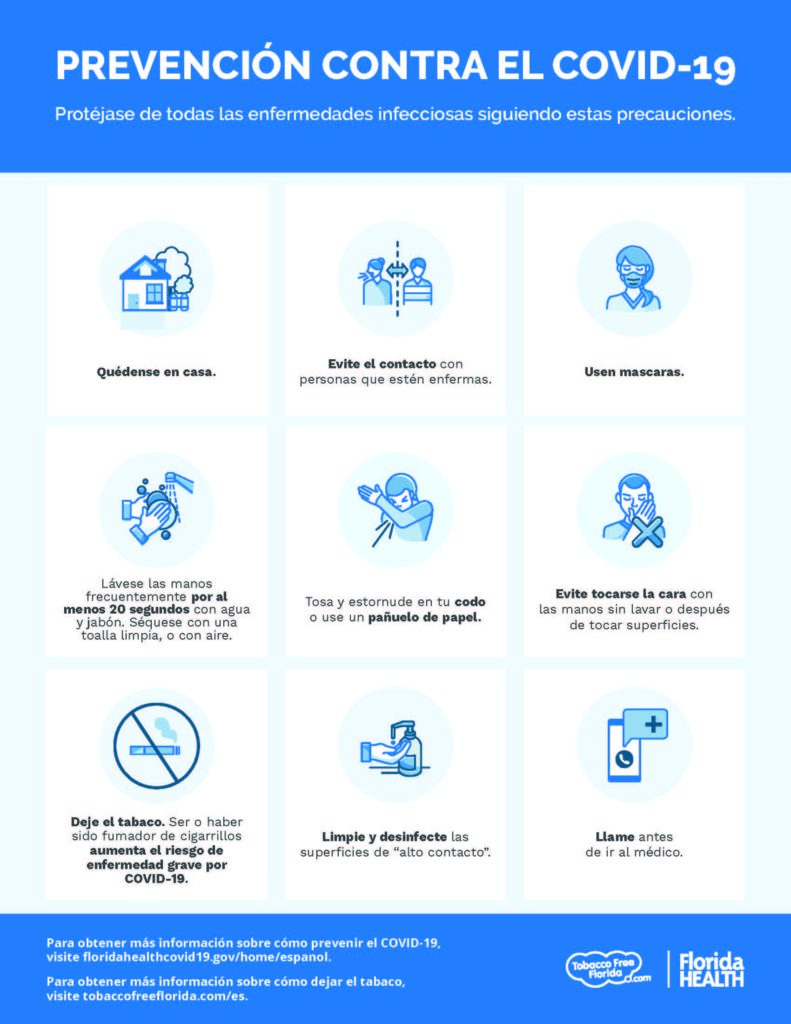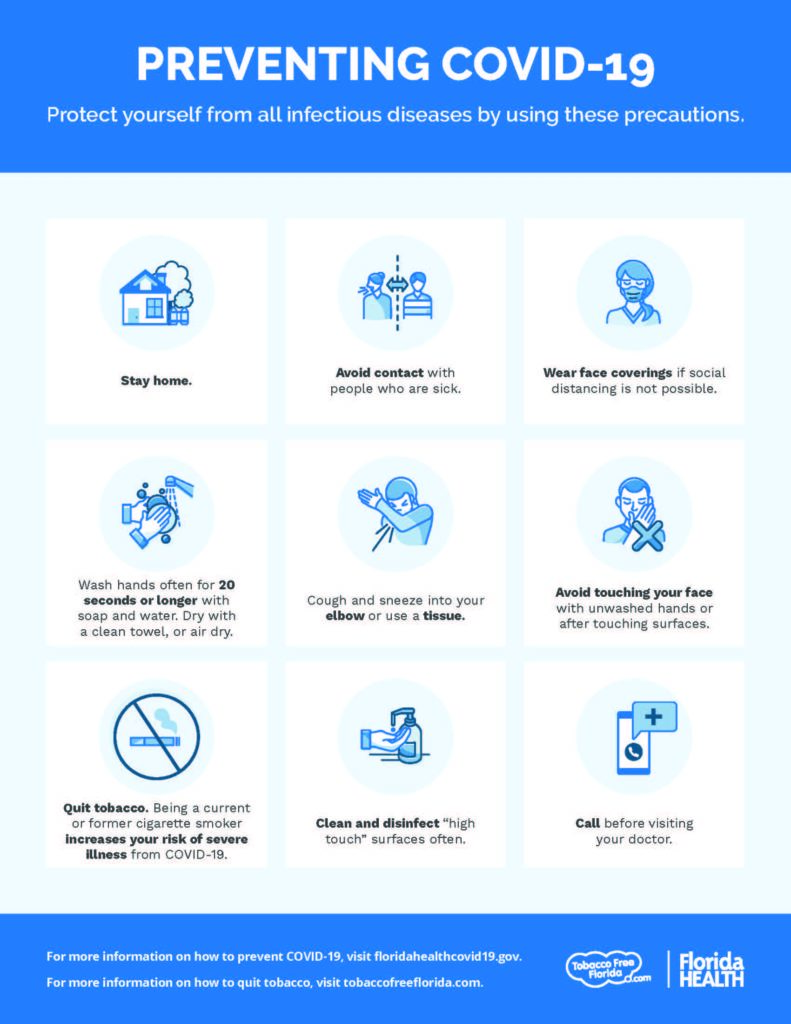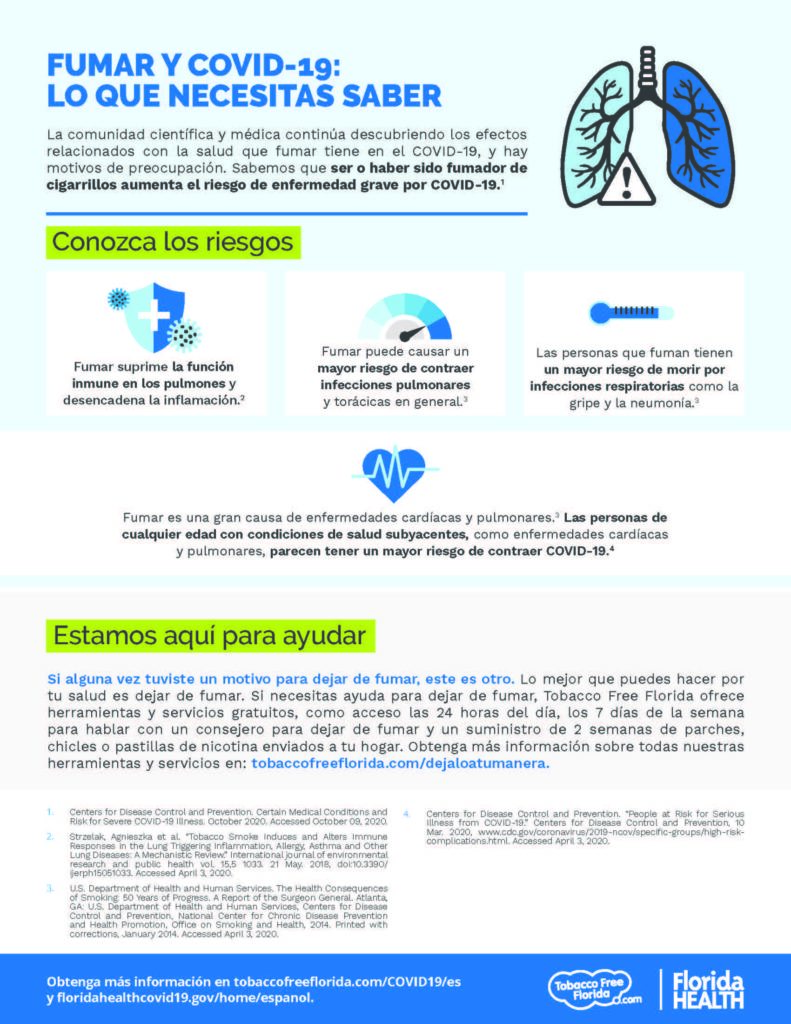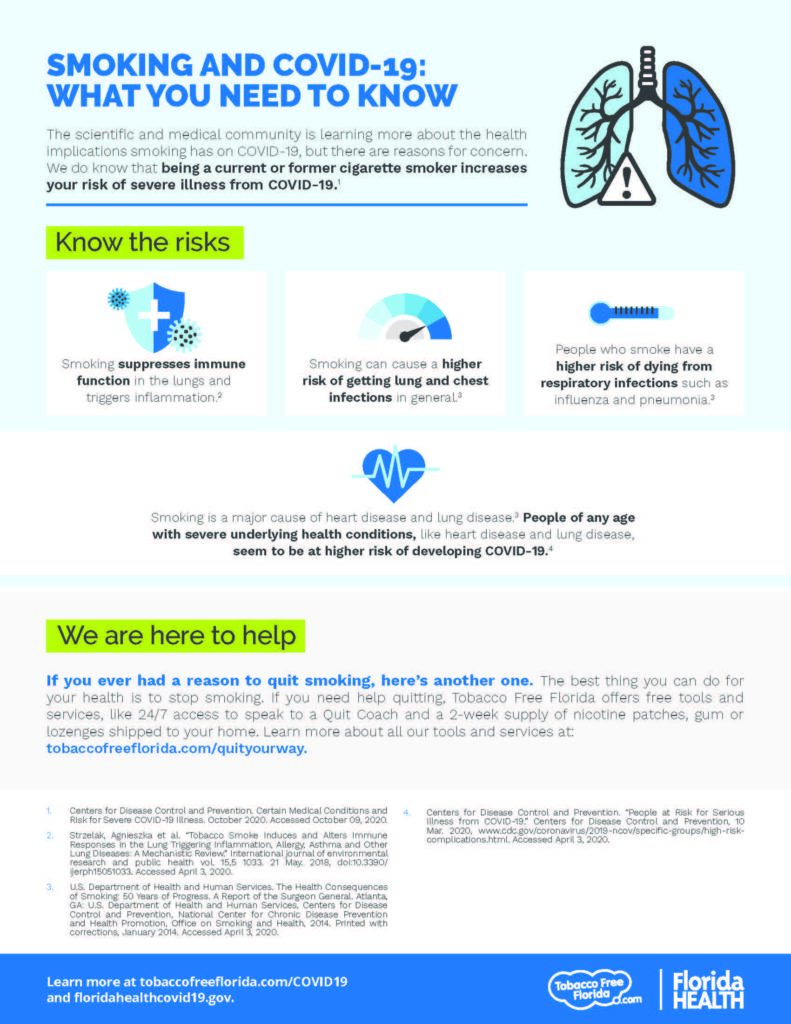La relación entre los afroamericanos y los cigarrillos mentolados
No es por casualidad que la mayoría de los fumadores afroamericanos prefieren los cigarrillos mentolados. Durante muchos años, la comunidad afroamericana ha sido un objetivo prioritario del mercadeo de cigarrillos mentolados, con mensajes adaptados a su cultura, por parte de la industria tabacalera. 1, 2 Su estrategia de marketing ha funcionado. En Estados Unidos, casi 9 de cada 10 fumadores afroamericanos mayores de 12 años prefieren los cigarrillos mentolados. 3 De hecho, la probabilidad de que un fumador afroamericano fume cigarrillos mentolados es 11 veces mayor que la de los fumadores blancos. 4
Las tabacaleras colocan sus anuncios publicitarios estratégicamente en más publicaciones para afroamericanos, y por lo tanto han estado más expuestos que las comunidades blancas a publicidad de cigarrillos. 5 Por otra parte, hay más establecimientos que venden productos de tabaco en los vecindarios de población predominantemente afroamericana o de otras minorías. 6 Y las tabacaleras también crean promociones de precios, como descuentos y cupones para múltiples cajetillas, que son usados con más frecuencia por los afroamericanos y por otros grupos minoritarios. 7 Las tiendas en los vecindarios negros incluso dedican más espacio en los estantes a los cigarrillos mentolados. 8 Algunas otras estrategias que la industria del tabaco ha implementado para promocionar los cigarrillos mentolados entre los afroamericanos incluyen las siguientes: campañas que usan la cultura y el lenguaje popular de los afroamericanos para promover los cigarrillos mentolados, eventos especiales en bares de hip-hop patrocinados por las tabacaleras donde se distribuyen muestras gratis de cigarrillos mentolados y promociones por correo directo. 9, 10
Los estudios indican que los cigarrillos mentolados podrían ser más adictivos que los no mentolados.11
El mentol hace que comenzar a fumar sea más fácil y que dejar de fumar sea más difícil. 12 El sabor del mentol hace que los pulmones se expandan aún más y permite que más de las sustancias químicas cancerígenas presentes en el humo de los cigarrillos se absorban en el organismo, lo que conduce a la adicción, la enfermedad y la muerte. 13, 14 Este es uno de los motivos por los cuales los afroamericanos –aun cuando generalmente fuman menos y comienzan a fumar más tarde– tienen más probabilidades que otros grupos de morir a causa de enfermedades relacionadas con el hábito de fumar. 15, 16, 17, 18, 19, 20 Las cuatro principales causas de muerte entre los afroamericanos son las enfermedades cardíacas, el cáncer, los derrames cerebrales y la diabetes, y el consumo de tabaco es un factor importante de riesgo en todas ellas. 21, 22, 23
Como todos los fumadores, la mayoría de los afroamericanos quieren dejar de fumar, y muchos lo han intentado. 24, 25
La relación entre los cigarrillos mentolados y los fumadores afroamericanos es tan fuerte que, si los cigarrillos mentolados se prohibieran, cerca del 44.5 por ciento de los afroamericanos fumadores de cigarrillos mentolados dejarían de fumar. 26 No obstante, la evidencia muestra que los fumadores de cigarrillos mentolados, sobre todo los afroamericanos y los hispanos, tienden a fracasar en sus intentos de dejar de fumar más que los que fuman cigarrillos no mentolados.27, 28, 29, 30, 31, 32, 33, 34, 35 A pesar de que intentan dejar de fumar más veces, los afroamericanos tienen menos éxito que los fumadores blancos o hispanos, posiblemente debido a un menor uso de recursos de ayuda (como los medicamentos y la asesoría terapéutica). 36, 37
La buena noticia es que Tobacco Free Florida tiene herramientas y servicios para ayudar a que los fumadores afroamericanos dejen de fumar. Si estás listo para dejar de fumar, ve a tobaccofreeflorida.com/quityourway y elabora una estrategia para dejar de fumar exitosamente. Si quieres ayudar, visita tobaccofreeflorida.com/get-involved e infórmate sobre cómo puedes combatir el consumo de tabaco en tu comunidad.
1 National Cancer Institute. The Role of the Media in Promoting and Reducing Tobacco Use [PDF–6.50 MB]. Smoking and Tobacco Control Monograph No. 19, NIH Pub. No. 07-6242, June 2008 [accessed 2019 July 29].
2 Gardiner PS. The African Americanization of Menthol Cigarette Use in the United States. Nicotine and Tobacco Research 2004; 6:Suppl 1:S55-65 [cited 2017 Oct 27].
3 Giovino GA, Villanti AC, Mowery PD et al. Differential Trends in Cigarette Smoking in the USA: Is Menthol Slowing Progress? Tobacco Control, doi:10.1136/tobaccocontrol-2013-051159, August 30, 2013 [cited 2017 Oct 27].
4 Lawrence D, Rose A, Fagan P, Moolchan ET, Gibson JT, Backinger CL. National patterns and correlates of mentholated cigarette use in the United States. Addiction. 2010;105:13-31.
5 U.S. Department of Health and Human Services. Tobacco Use Among U.S. Racial/Ethnic Minority Groups—African Americans, American Indians and Alaska Natives, Asian Americans and Pacific Islanders, and Hispanics: A Report of the Surgeon General. Atlanta: U.S. Department of Health and Human Services, Centers for Disease Control and Prevention, Office on Smoking and Health, 1998 [accessed 2019 July 29].
6 Center for Public Health Systems Science. Point-of-Sale Strategies: A Tobacco Control Guide [PDF–15.6 MB]. St. Louis: Center for Public Health Systems Science, George Warren Brown School of Social Work at Washington University in St. Louis and the Tobacco Control Legal Consortium, 2014 [accessed 2019 July 29].
7 Center for Public Health Systems Science. Point-of-Sale Strategies: A Tobacco Control Guide [PDF–15.6 MB]. St. Louis: Center for Public Health Systems Science, George Warren Brown School of Social Work at Washington University in St. Louis and the Tobacco Control Legal Consortium, 2014 [accessed 2019 July 29].
8 Center for Public Health Systems Science. Point-of-Sale Strategies: A Tobacco Control Guide [PDF–15.6 MB]. St. Louis: Center for Public Health Systems Science, George Warren Brown School of Social Work at Washington University in St. Louis and the Tobacco Control Legal Consortium, 2014 [accessed 2019 July 29].
9 U.S. Department of Health and Human Services. Preventing Tobacco Use Among Youth and Young Adults: A Report of the Surgeon General. Atlanta: U.S. Department of Health and Human Services, Centers for Disease Control and Prevention, National Center for Chronic Disease Prevention and Health Promotion, Office on Smoking and Health, 2012.
10 National Cancer Institute. The Role of the Media in Promoting and Reducing Tobacco Use. Bethesda (MD): U.S. Department of Health and Human Services, National Institutes of Health, National Cancer Institute, 2008.
11 Smokefree.gov. Menthol Cigarettes. Bethesda (MD): U.S. Department of Health and Human Services, National Institutes of Health, National Cancer Institute, 2015 [accessed 2019 July 29].
12 U.S. Food and Drug Administration (FDA), Preliminary Scientific Evaluation of the Possible Public Health Effects of Menthol Versus Nonmenthol Cigarettes, July 2013.
13 U.S. Department of Health and Human Services. Tobacco Use Among U.S. Racial/Ethnic Minority Groups—African Americans, American Indians and Alaska Natives, Asian Americans and Pacific Islanders, and Hispanics: A Report of the Surgeon General. Atlanta: U.S. Department of Health and Human Services, Centers for Disease Control and Prevention, Office on Smoking and Health, 1998 [accessed 2019 July 29].
14 Ton HT, Smart AE, Aguilar BL, et al. Menthol enhances the desensitization of human alpha3beta4 nicotinic acetylcholine receptors. Mol Pharmacol 2015;88(2):256-64 [accessed 2019 July 29].
15 U.S. Department of Health and Human Services. Tobacco Use Among U.S. Racial/Ethnic Minority Groups—African Americans, American Indians and Alaska Natives, Asian Americans and Pacific Islanders, and Hispanics: A Report of the Surgeon General. Atlanta: U.S. Department of Health and Human Services, Centers for Disease Control and Prevention, Office on Smoking and Health, 1998 [accessed 2019 July 29].
16 Centers for Disease Control and Prevention. Deaths: Final Data for 2013, Table 13 [PDF–1.67 MB]. National Vital Statistics Reports. Atlanta: Centers for Disease Control and Prevention, National Center for Health Statistics, 2013 [accessed 2019 July 29].
17 Heron, M. Deaths: Leading Causes for 2010 [PDF–5.08 MB]. National Vital Statistics Reports, 2013;62(6) [accessed 2019 July 29].
18 Schoenborn CA, Adams PF, Peregoy JA. Health Behaviors of Adults: United States, 2008–2010 [PDF–3.21 MB]. National Center for Health Statistics. Vital Health Stat 10(257) [accessed 2019 July 29].
19 American Lung Association. Too Many Cases, Too Many Deaths: Lung Cancer in African Americans [PDF–1.68 MB]. Washington, D.C.: American Lung Association, 2010 [[accessed 2019 July 29].
20 U.S. Department of Health and Human Services. The Health Consequences of Smoking. Atlanta: U.S. Department of Health and Human Services, Centers for Disease Control and Prevention, National Center for Chronic Disease Prevention and Health Promotion, Office on Smoking and Health, 2004 [accessed 2019 July 29].
21 U.S. Department of Health and Human Services. Tobacco Use Among U.S. Racial/Ethnic Minority Groups—African Americans, American Indians and Alaska Natives, Asian Americans and Pacific Islanders, and Hispanics: A Report of the Surgeon General. Atlanta: U.S. Department of Health and Human Services, Centers for Disease Control and Prevention, Office on Smoking and Health, 1998 [accessed 2019 July 29].
22 Centers for Disease Control and Prevention. Deaths: Final Data for 2013, Table 13 [PDF–1.67 MB]. National Vital Statistics Reports. Atlanta: Centers for Disease Control and Prevention, National Center for Health Statistics, 2013 [accessed 2019 July 29].
23 Heron, M. Deaths: Leading Causes for 2010 [PDF–5.08 MB]. National Vital Statistics Reports, 2013;62(6) [accessed 2019 July 29].
24 U.S. Department of Health and Human Services. The Health Consequences of Smoking—50 Years of Progress: A Report of the Surgeon General. Atlanta: U.S. Department of Health and Human Services, Centers for Disease Control and Prevention, National Center for Chronic Disease Prevention and Health Promotion, Office on Smoking and Health, 2014 [accessed 2019 July 29].
25 Centers for Disease Control and Prevention. Quitting Smoking Among Adults—United States, 2001–2010. Morbidity and Mortality Weekly Report, 2011;60(44):1513–9 [accessed 2019 July 29].
26 Pearson, J. L., Abrams, D. B., Niaura, R. S., Richardson, A., & Vallone, D. M. (2012). A Ban on Menthol Cigarettes: Impact on Public Opinion and Smokers’ Intention to Quit. American Journal of Public Health, 102(11), e107–e114. https://doi.org/10.2105/AJPH.2012.300804
27 Stahre M, Okuyemi KS, Joseph AM, Fu SS. Racial/ethnic differences in menthol cigarette smoking, population quit ratios and utilization of evidence-based tobacco cessation treatments. Addiction. 2010;105:75-83.
28 Gundersen DA, Delnevo CD, Wackowski O. Exploring the relationship between race/ethnicity, menthol smoking, and cessation, in a nationally representative sample of adults. Prev Med. Dec 2009;49(6):553-557. 1724 MASSACHUSETTS AVE, NW | WASHINGTON, DC 20036 | T 202.454.5555 F 202.454.5599 | LEGACYFORHEALTH.ORG Revised Apr. 2014 5/5.
29 Pletcher MJ, Hulley BJ, Houston T, Kiefe CI, Benowitz N, Sidney S. Menthol cigarettes, smoking cessation, atherosclerosis, and pumonary function: the Coronary Artery Development in Young Adults (CARDIA) study. Archives of Internal Medicine. 2006;166:1915-1922.
30 Gandhi KK, Foulds J, Steinberg MB, Lu SE, Williams JM. Lower quit rates among African American and Latino menthol cigarette smokers at a tobacco treatment clinic. Int J Clin Pract. 2009;63:360-367.
31 Okuyemi KS, Faseru B, Sanderson Cox L, Bronars CA, Ahluwalia JS. Relationship between menthol cigarettes and smoking cessation among African American light smokers. Addiction. 2007;102:1976-1986.
32 Trinidad DR, Pérez-Stable EJ, Messer K, White MM, Pierce JP. Menthol cigarettes and smoking cessation among racial/ethnic groups in the United States. Addiction. 2010;105:84-94.
33 Levy DT, Blackman K, Tauras J, et al. Quit attempts and quit rates among menthol and nonmenthol smokers in the United States. Am J Public Health. Jul 2011;101(7):1241-1247.
34 Okuyemi K, Ahluwalia J, Ebersole-Robinson M, Catley D, Mayo M, Resnicow K. Does menthol attenuate the effect of bupropion among African American smokers? Addiction. 2003;98(10):1387-1393.
35 Delnevo CD, Gundersen DA, Hrywna M, Echeverria SE, Steinberg MB. Smoking-cessation prevalence among U.S. smokers of menthol versus non-menthol cigarettes. Am J Prev Med. Oct 2011;41(4):357-365.
36 U.S. Department of Health and Human Services. Tobacco Use Among U.S. Racial/Ethnic Minority Groups—African Americans, American Indians and Alaska Natives, Asian Americans and Pacific Islanders, and Hispanics: A Report of the Surgeon General. Atlanta: U.S. Department of Health and Human Services, Centers for Disease Control and Prevention, Office on Smoking and Health, 1998 [accessed 2019 July 29].
37 Centers for Disease Control and Prevention. Quitting Smoking Among Adults—United States, 2001–2010. Morbidity and Mortality Weekly Report, 2011;60(44):1513–9 [accessed 2019 July 29].


